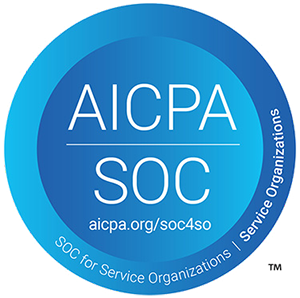Imagine you’re a professor overseeing a crucial final exam for your course. The stakes are high, and so are the risks. You've read the horror stories: students caught with hidden earpieces, fake identities, and even elaborate networks to relay answers in real-time. The integrity of your exam—and by extension, your course—is under constant threat. This scenario isn’t far-fetched. Many educators have shared their experiences with rampant cheating, especially in the shift to online assessments. One professor on Reddit recounted an elaborate cheating ring where students used smartwatches and phones to share answers in real-time. Such stories underscore the pressing need for robust proctoring solutions.
Cheating has also taken the form of students using private Discord servers to share answers in real-time or hacking into exam platforms to access questions beforehand. These stories underscore the pressing need for robust proctoring solutions that can adapt to the evolving tactics of tech-savvy cheaters.
As universities navigate the complex landscape of online education, the choice between AI and human proctoring becomes critical. Understanding when to deploy AI over human proctors, or vice versa, can significantly impact the quality and security of the examination process.
Advantages of AI Proctoring
AI proctoring offers a range of benefits that make it a viable option for many educational institutions:
- Scalability: AI proctoring systems can monitor a large number of students simultaneously, making it ideal for universities with extensive online programs.
- Continuous Monitoring: AI continuously scans the exam environment for suspicious activities such as the presence of unauthorized devices, other people, or abnormal eye movements.
- Advanced Verification: Facial recognition and voice recognition technologies ensure that the student taking the exam is indeed the enrolled candidate, preventing impersonation.
- Cost-Effectiveness: Without the need for human proctors, AI proctoring reduces the costs associated with hiring and managing proctors.
- Recorded Proctoring: Exams can be recorded and reviewed post-assessment, providing flexibility and a means for in-depth analysis of any suspicious behavior.
Limitations of AI Proctoring
However, AI proctoring is not without its challenges:
- False Positives: AI systems can sometimes flag innocent behaviors (like student tics or background noises) as suspicious, which can disrupt the exam process.
- Infrastructure Requirements: AI proctoring necessitates certain technological infrastructure, including webcams, high-speed internet, and capable computers, which may not be accessible to all students.
- Lack of Human Judgment: AI lacks the ability to understand complex situations and nuances that a human proctor can discern, such as differentiating between cheating and legitimate student behavior.
Advantages of Human Proctoring
Human proctoring, while traditional, brings several strengths to the table:
- Live Monitoring and Intervention: Human proctors can monitor live exams and intervene immediately if they detect suspicious activity.
- Personal Interaction: Proctors can communicate with students to address any concerns or issues in real-time, providing a more personal exam experience.
- Human Judgment: Human proctors can better understand and evaluate complex situations, reducing the likelihood of false positives and ensuring a fairer assessment.
Limitations of Human Proctoring
Nonetheless, human proctoring also has its drawbacks:
- Scalability Issues: Human proctors can only oversee a limited number of students at a time, which can be a significant limitation for large-scale exams.
- Scheduling Coordination: Organizing schedules for proctors and students can be logistically challenging and time-consuming.
- Human Error: Human proctors can make mistakes or be inconsistent in their monitoring, which can compromise the integrity of the exam.
The Hybrid Approach: Combining AI and Human Proctoring
To address the limitations of both AI and human proctoring, a hybrid approach can be highly effective. This method leverages the strengths of AI for continuous monitoring and identity verification, while incorporating human proctors for live intervention and nuanced judgment.
Talview's AI Proctoring Solution
Talview's proctoring solution exemplifies this hybrid approach, combining AI and human oversight to ensure robust and secure online assessments. Key features of Talview's system include:
- Candidate Authentication: Using facial and voice recognition, Talview ensures that the student taking the exam is the one enrolled, preventing impersonation attempts.
- Real-Time and Random Checks: The system performs continuous real-time monitoring and can conduct random checks during the exam to verify the student’s presence and activity.
- Detection of Suspicious Events: Talview's AI detects a range of suspicious activities, from unauthorized devices and multiple people in the room to unusual eye movements that might suggest cheating.
At the same time, human proctors are available to step in as needed, providing a balanced and comprehensive monitoring solution.
Customer Success Stories
Cambridge Assessments
Talview has successfully partnered with Cambridge Assessments, enabling them to transition from traditional in-person exams to virtual assessments with remote proctoring. This partnership empowered Cambridge to:
- Deploy Talview's solution to over 200 agents worldwide.
- Launch a globally accessible yet locally tailored proctoring system.
- Achieve high candidate satisfaction, ensuring a seamless assessment experience.
La Trobe University
La Trobe University leveraged Talview's live proctoring to manage remote exams for 12,000 students simultaneously. The highlights of this collaboration include:
- A live proctor-to-student ratio of 1:8, ensuring effective oversight.
- Prompt and insightful feedback for students, enhancing the learning experience.
- Compliance with WCAG 2.1 AA standards, ensuring accessibility for all students.
Recognition and Market Leadership
Talview has been recognized as a leader in the G2 Proctoring and Assessment software category, underscoring its excellence and reliability in the field of online proctoring.
Conclusion
Universities should consider a hybrid approach that combines AI and human proctoring to ensure the integrity, fairness, and scalability of their online assessments. By leveraging the strengths of both methods, institutions can provide a secure and seamless exam experience for all students. Talview's AI proctoring solution, supported by successful implementations at institutions like Cambridge Assessments and La Trobe University, demonstrates the effectiveness of this balanced approach.







Leave a Reply